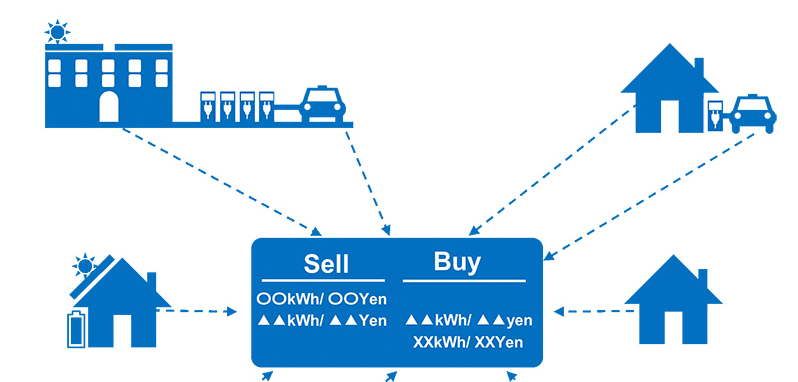The University of Tokyo (UTokyo), Toyota and Trende will conduct tests starting June 17 at Toyota’s Higashi-Fuji Technical Center and the surrounding area on an electricity system (P2P1 electricity transactions) that will enable homes, businesses and electrified vehicles connected to the electricity grid to trade electricity using blockchain.
As distributed power supplies such as solar panels, secondary batteries and electrified vehicles become increasingly widespread, Japan’s electricity supply system is in a transitional state as it shifts from its traditional large-scale consolidated system to a distributed system in which individuals and businesses own their own power supply.
The objective of the test is to verify the economic advantage of having prosumers (who generate electricity with their own distributed power supply) trade electricity with electricity consumers via an electricity exchange market – at prices that reflect supply and demand conditions; and to assess the feasibility of a two-way, self-autonomous electricity supply system that would enable direct trading with other prosumers.
The testing will involve the establishment of an electricity exchange accessible by households and businesses participating in the test, and the installation of an AI-powered electricity management system (an electricity trading agent) in each household and business.
The electricity trading agent places orders to buy and sell electricity in an exchange based on electrical consumption, and forecasts the electrical power requirements of the solar panels from households and businesses. Electricity transactions between individuals are implemented using a defined algorithm that matches buy and sell orders collected in the electricity exchange from each household and business.
It will be the world’s first test for electricity trading between individuals that incorporates PHEVs as a distributed power supply, in addition to solar panels and secondary batteries.
The test aims to verify the economic advantage of having electricity consumers and prosumers trade electricity through market transactions. It will also simulate electricity consignment fees based on distance, and verify an algorithm for predicting the electricity demands of electrified vehicles, which have varying electrical consumption levels based on cruising range.


